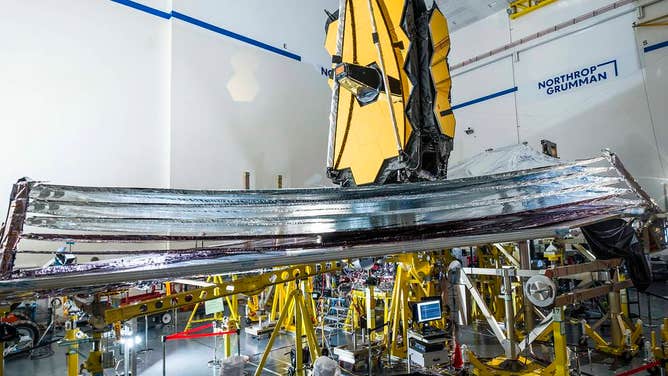James Webb Space Telescope to begin unfurling sunshield in space
The tennis-court-sized sunshield protects JWST from the sun's rays, keeping it cool in space

The James Webb Space Telescope and its five-layer sunsheild. (Image: NASA)
After launching from French Guiana on Christmas morning, the James Webb Space Telescope has already completed a few critical milestones in space. At the same time, significant moments lay ahead for the most powerful telescope ever built.
To see the first galaxies and look back 13.5 billion years, Webb must fully deploy and travel 1 million miles away from Earth.
For launch, Webb was folded up like an elaborate piece of origami. Now in space, the massive spacecraft begins the slow and steady process of unwrapping itself this week. Less than an hour after launching Saturday, Webb's solar array deployed providing power to the spacecraft.
Jane Rigby, Webb operations project scientist, described the mood at the Mission Operations Center at the Space Telescope Science Institute in Baltimore after the sun touched Webb's solar array for the first time.
"I look up to see the video feed from the launch vehicle, and THERE IT IS, our beautiful observatory with its solar panel all the way out, shining in the sun," Rigby wrote in a NASA blog post.
A mid-course correction burn was completed on Christmas night, sending Webb on the trajectory toward its final destination, 1 million miles from Earth at the second Lagrange point.
Next up is the deployment of Webb's tennis-court-sized sunshield. Three days after launch, the five-layer sunshield begins to unfurl in space. It's an essential part of the spacecraft because it protects Webb's science instruments from the sun, keeping them at the frigid temperatures needed to operate. Each kite-shaped layer blocks more heat than the last, radiating heat out into space from between the five layers.
The process will take about five days before the 69.5-foot-long and 46.5-foot-wide sunsheild is entirely deployed. According to NASA, each layer must be perfectly separated.
Below is a video of the sunshield deployment test conducted in 2014 on Earth at Northrop Grumman's California facility.
NASA has a website that shows how far Webb has traveled, its speed and the next steps in its deployment sequence. Two days into the mission, JWST is already farther than the moon to Earth.
After the sunshield is open, the next step will be to swing Webb's secondary mirror out in front of its golden primary mirror.
According to NASA, deployment is not automated but controlled by people at mission operations. The team will be monitoring Webb in real-time before moving ahead with each step.
Webb is expected to be out of its launch state and open in space about two weeks after it launched. The space telescope will arrive at its final orbit in late January.